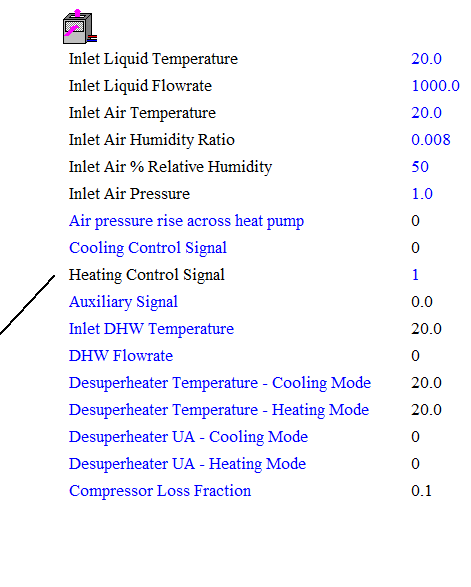
| Libre de virus. www.avast.com |
_______________________________________________Adrian,
Any flow convergence issues you are having is likely due to something beyond the AWHP. This type does not set the water flow rate - it simply passes it through the device; heating or cooling it of the device is on or simply just passing it through if the device is off. Pumps are the devices in TRNSYS that typically set the flow rates for your loops. I would suggest you use the TRACE feature and watch to see what is happening when you are getting convergence issues.
Jeff
--- Jeff Thornton President - TESS LLC 3 N. Pinckney Street, Suite 202, Madison WI USA 53703 Office: (608) 274-2577 Fax: (608) 278-1475 www.tess-inc.com E-Mail: thornton@tess-inc.comOn 07/05/2020 7:36 pm, Adrian Riebel Brummer via TRNSYS-users wrote:
Dear TRNSYS users,I have a problem with Type 941 (Air-Water Heat Pump). My problem is that the simulation doesn't converge when the waterflow in the heat pump is zero, despite the heat pump is also in off mode (heating and cooling control signals are both set to zero).I have read the mathematical reference of this Type and it says something about a "Fan control signal", which functions, as I understand, as the master on-off switch of the heat pump. The problem is that I can't find that Input in the TRNSYS programm.I would like to know why I can't find that Input, and why the model doesn't converge despite the heat pump shouldn't be doing anything.I send you a picture of all the inputs that I can see for this Type. I have TRNSYS18 and TessLibs17.Regards,Adrian Riebel
Libre de virus. www.avast.com
_______________________________________________ TRNSYS-users mailing list TRNSYS-users@lists.onebuilding.org http://lists.onebuilding.org/listinfo.cgi/trnsys-users-onebuilding.org
TRNSYS-users mailing list
TRNSYS-users@lists.onebuilding.org
http://lists.onebuilding.org/listinfo.cgi/trnsys-users-onebuilding.org
_______________________________________________ TRNSYS-users mailing list TRNSYS-users@lists.onebuilding.org http://lists.onebuilding.org/listinfo.cgi/trnsys-users-onebuilding.org
